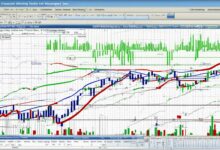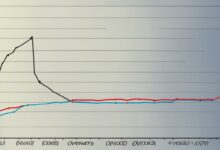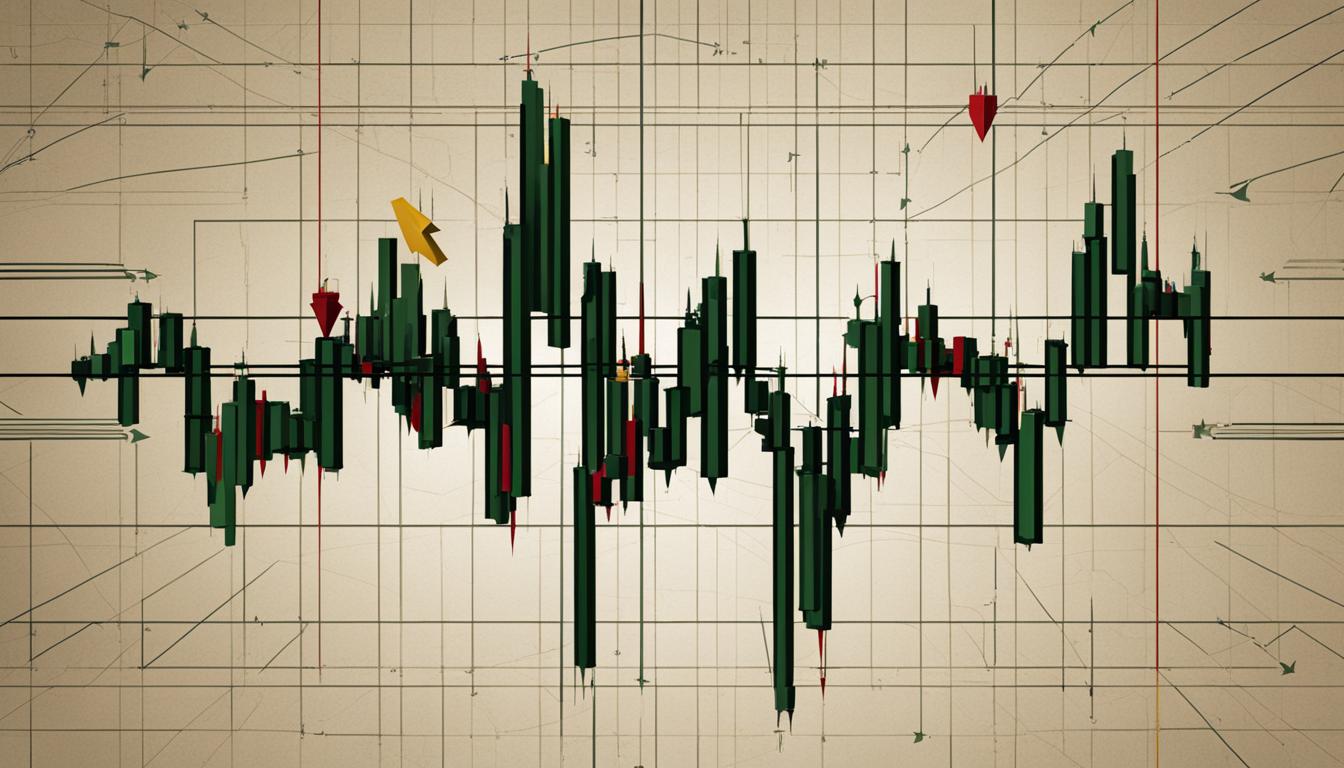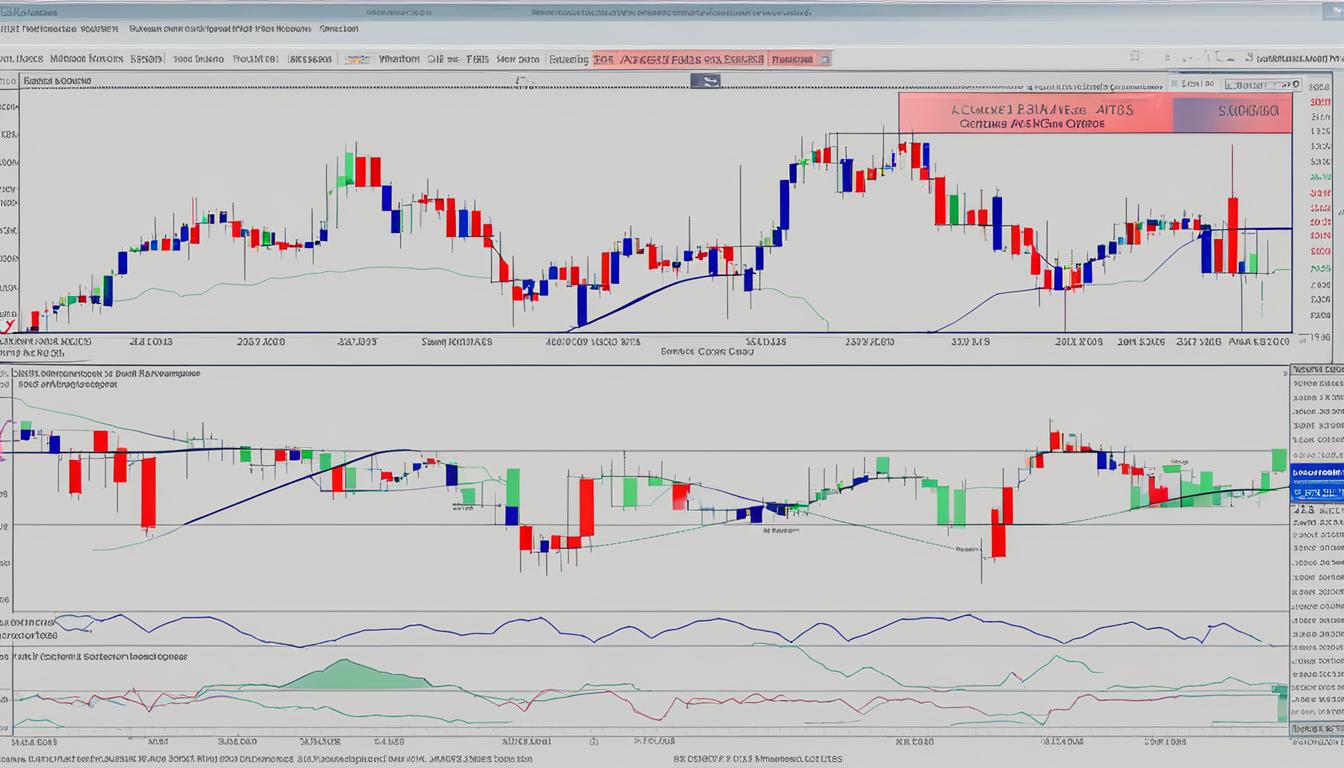Closer to the Price Action: Trading Volatile Markets with the EMA Indicator
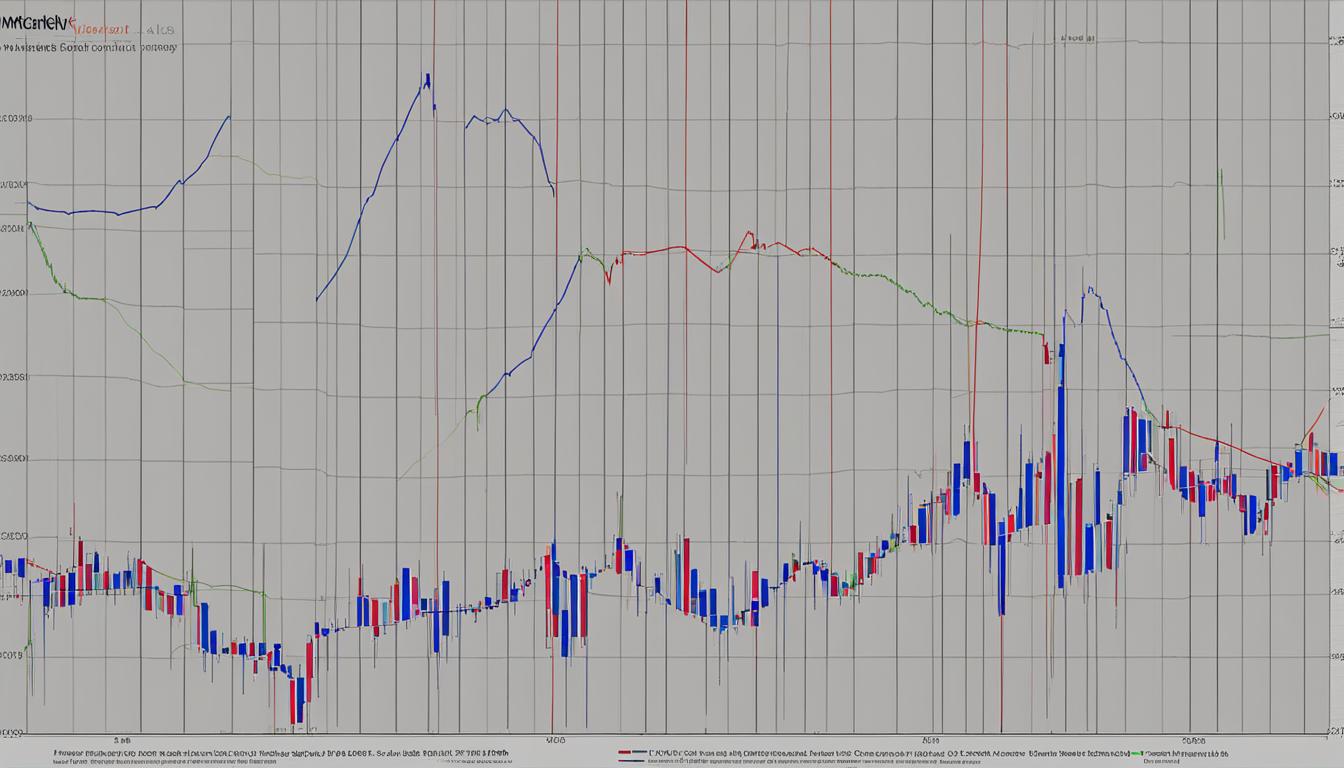
The exponential moving average (EMA) is a powerful tool that traders utilize to navigate volatile markets with precision. Unlike its counterpart, the simple moving average (SMA), the EMA exhibits a faster response time to price movement, making it an invaluable tool in capturing market trends.
Traders who seek to maximize their profits and effectively analyze price action often turn to the 50-day EMA. This specific period EMA is particularly beneficial for identifying mid-term opportunities and spotting natural counterswings in active trends. It acts as a reality check, aids in trend-following, and can be combined with other indicators for more advanced trading strategies. Moreover, the 50-day EMA holds a reputation for identifying crucial support and resistance levels.
Key Takeaways:
- The EMA is a popular tool among traders operating in volatile markets.
- The 50-day EMA assists in mid-term trading opportunities and identifying natural trend reversals.
- It can serve as a trend-following tool, a reality check, or in combination with other indicators for advanced strategies.
- The 50-day EMA is effective in identifying support and resistance levels in the market.
- Traders can use the EMA to navigate volatile markets with precision and increase their profit potential.
The 50-Day EMA: A Reliable Trend Estimation Tool
The 50-day EMA is a widely used tool for trend estimation in volatile markets. By providing a clear view of the market trend, it helps traders make informed decisions and maximize profits. When the price is above the 50-day EMA, it indicates an uptrend, while a price below the 50-day EMA suggests a downtrend. This simple yet powerful indicator allows traders to identify potential buying or selling opportunities.
Additionally, the 50-day EMA can act as a support or resistance level, providing traders with key price levels to watch. These levels can serve as entry or exit points for trades, further enhancing the effectiveness of the 50-day EMA. By paying attention to how the price interacts with the 50-day EMA, traders can gain valuable insights into the market dynamics and improve their trading strategies.
When utilizing the 50-day EMA, it’s important to consider other technical indicators and market conditions for confirmation. While the 50-day EMA is a reliable trend estimation tool, it should not be used in isolation. Traders should always exercise caution and conduct thorough analysis before making trading decisions.
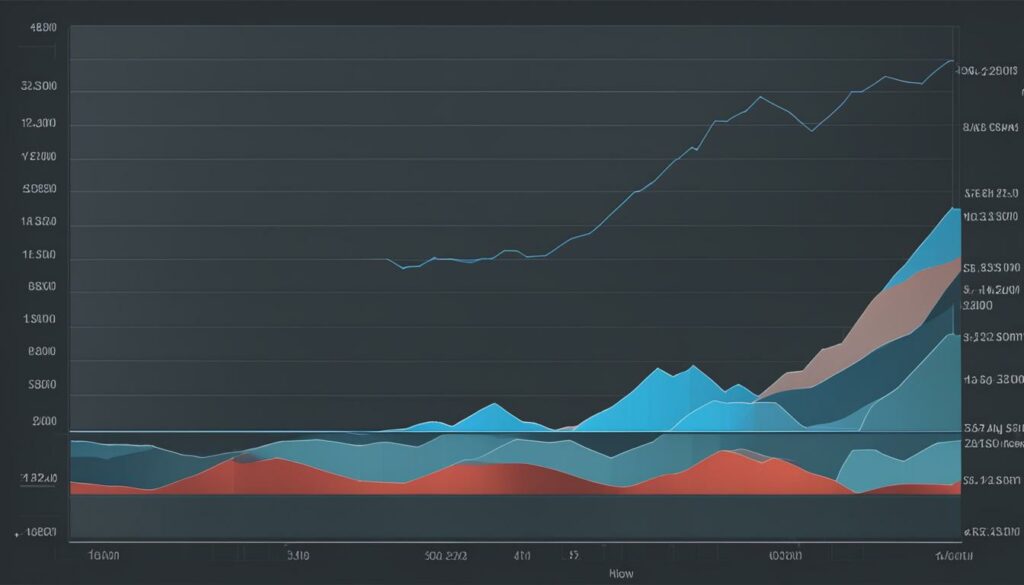
Table: Example of the 50-Day EMA Support and Resistance Levels
| Date | Support Level | Resistance Level |
|---|---|---|
| January 1, 2022 | $100 | $120 |
| February 1, 2022 | $110 | $130 |
| March 1, 2022 | $120 | $140 |
This table showcases an example of support and resistance levels based on the 50-day EMA. Traders can use these levels to manage risk, set stop-loss orders, or identify potential price reversals. The 50-day EMA provides valuable insights into the market trend and price levels that can significantly impact trading outcomes.
Managing Risk with the 50-Day EMA
The 50-day EMA can be a valuable tool for managing risk in trading volatile markets. By understanding how the price interacts with this indicator, traders can make informed decisions to protect profits and minimize losses.
One way to manage risk with the 50-day EMA is by placing stop-loss orders just across this indicator. By setting a stop-loss order slightly below the 50-day EMA for long positions or above it for short positions, traders can limit their potential losses if the price moves against their position.
Placing stop-loss orders just across the 50-day EMA can help protect profits and minimize losses.
However, it is important to consider market conditions and the behavior of the 50-day EMA. In volatile modern markets, the 50 and 200-day EMAs have become broad zones due to aggressive stop hunting. Traders need to be cautious and consider how deep violations of these moving averages may go before placing a stop or timing an entry at or near the moving average.
When using the 50-day EMA for risk management, patience is key. It is crucial to wait for a price reversal or a confirmed breakout before taking action. This ensures that traders have a higher probability of success and reduces the risk of entering or exiting positions prematurely.
The Power of Moving Average Fractals
Moving averages, including the 50-day EMA, can be applied to different time frames, allowing traders to spot intraday oscillations or long-term trends. The 50-day EMA is particularly useful in capturing trend reversals and can help traders enter or exit positions at key turning points. By observing how the price interacts with the 50-day EMA, traders can identify potential buying or selling opportunities. It’s important to note that the reliability of moving average signals can vary depending on the market conditions and time frame used.
When it comes to identifying trend reversals, moving average fractals play a significant role. A fractal is a series of five consecutive bars where the middle bar has the highest high or the lowest low compared to the surrounding bars. When a fractal appears above the 50-day EMA, it can indicate a potential bearish reversal, signaling a shift from an uptrend to a downtrend. Conversely, a fractal appearing below the 50-day EMA can suggest a potential bullish reversal, indicating a shift from a downtrend to an uptrend.
Traders can use these moving average fractals to validate their trading decisions. If a bearish fractal occurs below the 50-day EMA, it may serve as confirmation to enter a short position or exit a long position. On the other hand, a bullish fractal above the 50-day EMA can provide confirmation to enter a long position or exit a short position. By combining the analysis of moving averages and fractals, traders can enhance their ability to identify trend reversals and make timely and informed trading decisions.

Table: Moving Average Fractals
| Fractal Type | Signal | Action |
|---|---|---|
| Bullish Fractal | Appears above the 50-day EMA | Enter long position or exit short position |
| Bearish Fractal | Occurs below the 50-day EMA | Enter short position or exit long position |
Pinball Strategy with the 50-Day and 200-Day EMA
The pinball strategy is a popular trading technique that utilizes the 50-day exponential moving average (EMA) and the 200-day EMA to identify potential trading opportunities. This strategy takes advantage of the oscillations between these two moving averages, allowing traders to profit from the back-and-forth movement in the market.
When implementing the pinball strategy, traders can take long positions when the price bounces off the 50-day EMA. This indicates a potential upward movement in the market. Conversely, when the price reaches the 200-day EMA, traders can take short positions, anticipating a potential downward movement in the market. By combining these two moving averages, traders can effectively navigate the market and capitalize on trend reversals.
However, it’s important to note that the effectiveness of the pinball strategy can vary depending on market conditions. Traders should consider other technical indicators and confirmatory signals to enhance the accuracy of their trades. Additionally, adapting the strategy to different market conditions and time frames is essential for achieving consistent results.
Table: Example of the Pinball Strategy
| Date | Price | 50-Day EMA | 200-Day EMA | Action |
|---|---|---|---|---|
| Jan 1, 2022 | 100 | 95 | 90 | |
| Jan 2, 2022 | 110 | 100 | 95 | Buy |
| Jan 3, 2022 | 120 | 105 | 100 | |
| Jan 4, 2022 | 90 | 110 | 105 | Sell |
The table above illustrates an example of the pinball strategy in action. On January 1, 2022, the price is below both the 50-day EMA and the 200-day EMA, indicating a potential downtrend. However, on January 2, the price bounces off the 50-day EMA, providing a buying opportunity. As the price continues to rise and reaches the 200-day EMA on January 4, a selling opportunity presents itself.
By properly implementing the pinball strategy and adapting it to market conditions, traders can increase their chances of success in volatile markets. It’s essential to combine technical analysis with fundamental analysis and risk management techniques to make informed trading decisions.
Bullish and Bearish Crossovers: Analyzing the 50-Day and 200-Day EMAs
The crossover between the 50-day EMA and the 200-day EMA is a key event in technical analysis, providing important signals for trend changes. These crossovers can help traders identify potential uptrends or downtrends in the market. Let’s take a closer look at how bullish and bearish crossovers can be analyzed using the 50-day EMA and the 200-day EMA.
A bullish crossover occurs when the 50-day EMA crosses above the 200-day EMA. This indicates that the shorter-term moving average is crossing above the longer-term moving average, suggesting a potential shift towards an uptrend. It is seen as a bullish signal by traders and may indicate a buying opportunity. However, it is important to consider other factors and use the crossover in conjunction with other technical indicators for confirmation.
On the other hand, a bearish crossover happens when the 50-day EMA crosses below the 200-day EMA. This suggests that the shorter-term moving average is crossing below the longer-term moving average, potentially signaling a shift towards a downtrend. Traders may interpret this as a bearish signal and consider it a potential selling opportunity. Again, it is crucial to use other technical indicators and analyze market conditions before making any trading decisions based solely on the crossover.
Example:
“The bullish crossover between the 50-day EMA and the 200-day EMA in XYZ stock confirmed the uptrend, as the stock price showed a significant increase after the crossover. This suggests that buying pressure was strong and supported by the longer-term moving average.”
It is essential to note that while bullish and bearish crossovers can provide valuable insights into trend changes, they are not foolproof indicators. Traders should consider other technical analysis tools, such as volume indicators, momentum oscillators, and price patterns, to increase the reliability of their trading decisions.
Now that we have explored the analysis of bullish and bearish crossovers using the 50-day EMA and the 200-day EMA, let’s move on to the next section to learn about the ongoing research and innovation in technical analysis, specifically focusing on moving averages.
The Hunt for an Improved Moving Average: The Exponential Moving Average (EMA)
Moving averages are a key component of technical analysis, providing traders with valuable insights into market trends and potential trading opportunities. One popular type of moving average is the exponential moving average (EMA), which is designed to reduce the lag often associated with traditional moving averages. The EMA places greater emphasis on recent price data, resulting in a faster response time to price movements.
The EMA can be a useful tool for generating trading signals. When the price crosses above the EMA, it can indicate a bullish signal, suggesting that the trend may be shifting upwards. Conversely, when the price crosses below the EMA, it can be a bearish signal, indicating a potential downtrend. Traders can use these signals in conjunction with other technical indicators to confirm their trading decisions and increase the probability of success.
It’s important to note, however, that the EMA, like all moving averages, is a lagging indicator. This means that it may not provide real-time information about market conditions. Traders should be aware of this lag and use the EMA in conjunction with other tools and analysis techniques to gain a more comprehensive view of the market.
“The EMA, with its faster response time, has become a popular choice among traders looking to reduce lag and capture trend reversals more effectively.”
EMA vs. SMA: Which is better?
While the EMA offers faster response time compared to the simple moving average (SMA), the choice between the two ultimately depends on the trader’s trading style and preferences. The EMA is more responsive to recent price data, making it particularly useful in trending markets. On the other hand, the SMA provides a smoother representation of the overall trend and may be preferred by traders who focus on long-term analysis.
Ultimately, both the EMA and the SMA have their strengths and weaknesses, and traders may choose to use one or both depending on their individual trading strategies. The key is to understand the characteristics of each moving average and adapt them to the current market conditions.
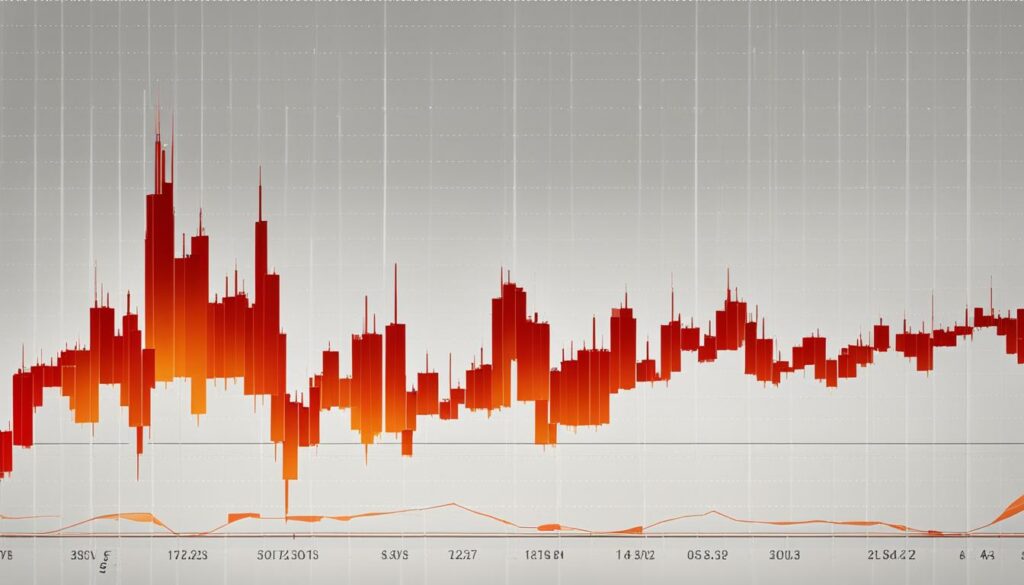
Table: Pros and Cons of the Exponential Moving Average (EMA)
| Pros | Cons |
|---|---|
| Provides faster response time to price movements | May generate false signals during choppy or sideways markets |
| Useful for capturing trend reversals | Can result in whipsaw trades |
| Can be used in combination with other indicators for confirmation | May lag behind real-time market conditions |
Despite its limitations, the EMA remains a valuable tool for traders seeking to improve their trading signals and strategy performance. By understanding the strengths and weaknesses of the EMA, traders can effectively incorporate it into their trading strategies and make informed trading decisions.
Conclusion
In conclusion, moving averages, particularly the exponential moving average (EMA), are essential tools for traders in technical analysis and trading strategies. They provide valuable insights into market trends and help in risk management and trend estimation. By understanding the strengths and weaknesses of moving averages, traders can optimize their use and enhance their trading strategies.
When it comes to risk management, the EMA can be used to set stop-loss orders and protect profits, reducing losses in volatile markets. Additionally, the EMA can act as a support or resistance level, providing key price levels for traders to watch.
Traders can also utilize moving averages to identify potential trend reversals and trading opportunities. The EMA, with its faster response to price movement, can capture these turning points and help traders enter or exit positions at strategic moments.
While moving averages have limitations and can generate whipsaw trades, they remain valuable in making informed trading decisions. By combining moving averages with other technical indicators and adapting them to the market conditions, traders can enhance their trading strategies and improve their overall performance.
FAQ
What is the 50-day EMA and why is it important in trading?
The 50-day EMA is a variation of the simple moving average (SMA) and provides traders with a faster response time to price movement. It is useful for mid-term opportunities, identifying natural counterswings in trends, and for determining support and resistance levels.
How can the 50-day EMA help in trend estimation?
The 50-day EMA provides a clear view of the market trend. When the price is above the 50-day EMA, it suggests an uptrend, while a price below indicates a downtrend. It can also act as a support or resistance level, offering key price levels to watch.
How does the 50-day EMA help in managing risk?
Traders can place stop-loss orders just across the 50-day EMA to protect profits and minimize losses. However, it’s important to consider the depth of violations in volatile markets before placing stops or timing entries near the moving average.
How can the 50-day EMA be used to capture trend reversals?
By observing how the price interacts with the 50-day EMA, traders can identify potential buying or selling opportunities and enter or exit positions at key turning points.
What is the pinball strategy with the 50-day and 200-day EMA?
The pinball strategy involves trading oscillations between the 50-day and 200-day EMA. Traders can take long positions when the price bounces off the 50-day EMA and take short positions when it reaches the 200-day EMA.
How do bullish and bearish crossovers of the 50-day and 200-day EMA indicate trend changes?
A bullish crossover occurs when the 50-day EMA crosses above the 200-day EMA, indicating a potential uptrend. A bearish crossover happens when the 50-day EMA crosses below the 200-day EMA, signaling a potential downtrend.
What are the limitations of moving averages like the EMA?
Moving averages, including the EMA, can generate whipsaw trades and result in small wins and losses. They should be used in conjunction with other technical indicators and factors for confirmation.
Why are moving averages, including the EMA, important in trading?
Moving averages provide valuable insights into market trends, support and resistance levels, and can help traders make informed trading decisions. Despite their limitations, they remain a crucial tool in technical analysis and trading strategy optimization.
